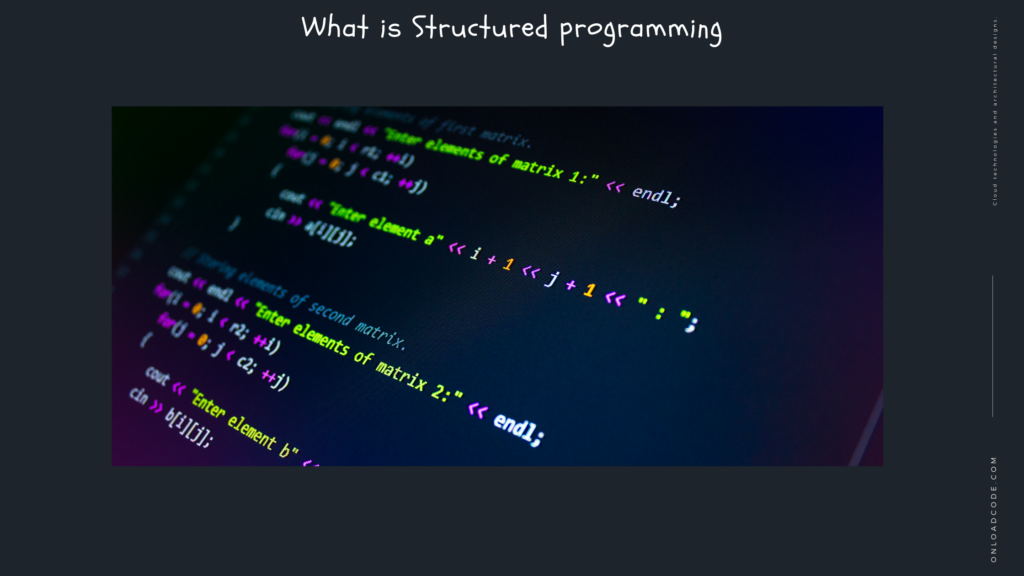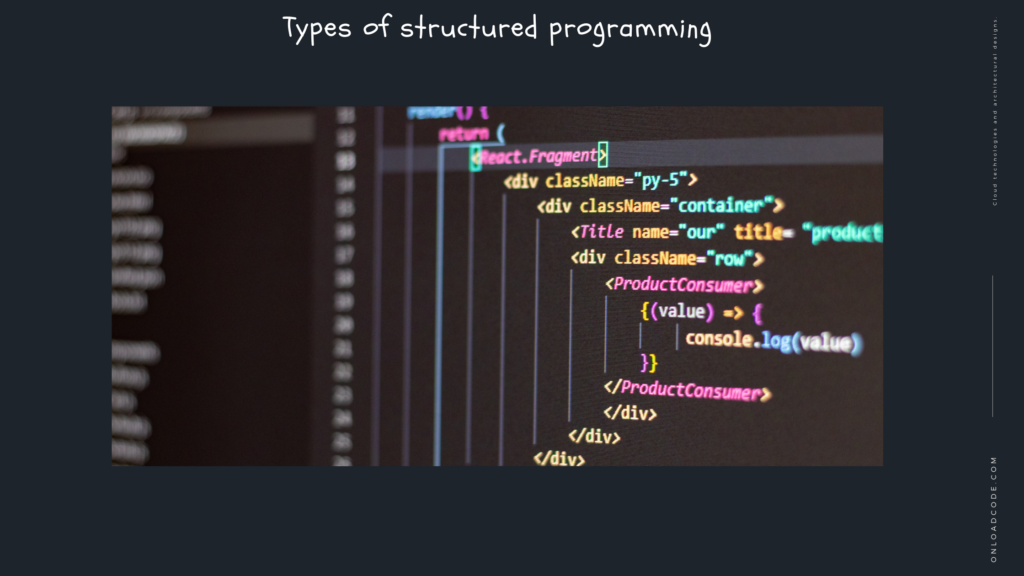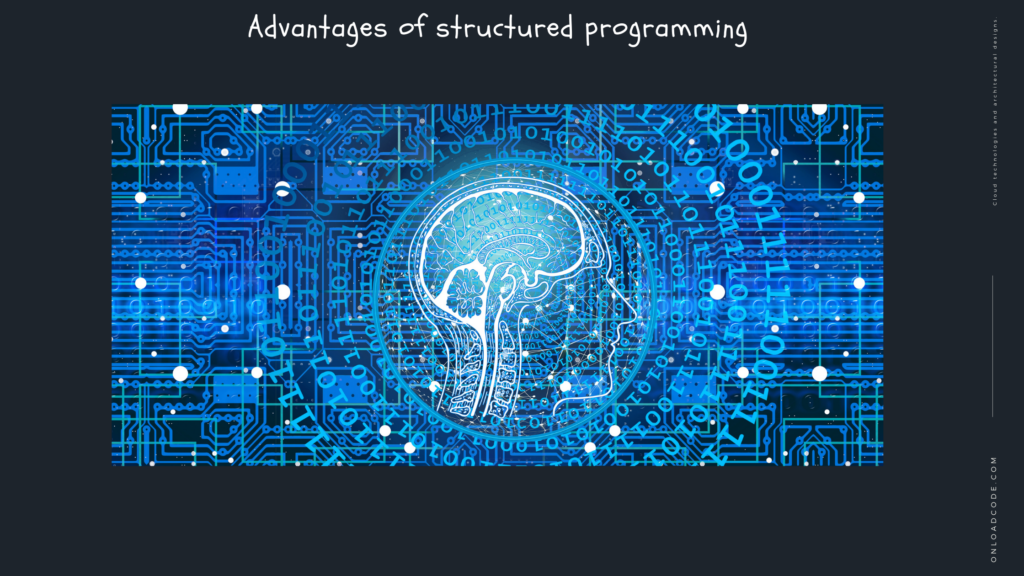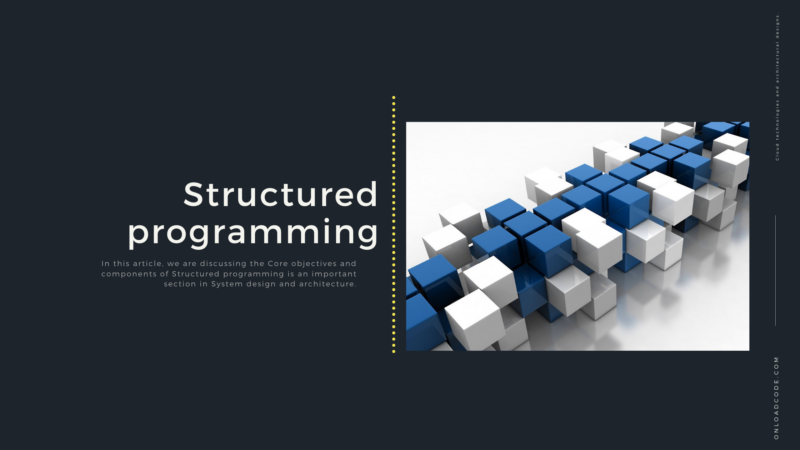This is the 5th article on the System Design and Software Architecture series. In this article, we are discussing the Core objectives and components of Structured programming is an important section in System design and architecture.
Previous articles
- Introduction to System Design and Architecture
- Values of system software
- Programming Paradigm
- Object-Oriented Programming
What is Structured programming

Structured programming is a programming model that facilitates the creation of programs with readable code and reusable components. All modern programming languages support structured programming, but the support mechanisms vary, as do the syntax of programming languages.
When a module or element that can reuse from a code. And it is also possible to create structured code using modules written in different languages. As long as it conforms to a common module interface or application program interface (API) specifications. However, when the module reuses, it may compromise data security and control. So it is very important to define and enforce a privacy policy that governs the use of the module.
Structural programming encourages an application program that can divide into a hierarchy of modules or autonomous elements. This may contain other such elements. Within each element, the code can further structure by using relevant logic components that are designed to improve readability and maintainability. This may include the case of testing a variable against a set of values; Repeat, creating continuous loops until a condition meets. In all structured programming languages, unconditional transfer of control or Goto Declaration is invalid and it will not available.
Types of structured programming

- Procedural programming. Modules with a set of parameters to perform a task define as “action procedures” or “tasks”. A procedural language initiates a process through which data has been provided. It is the most common category and has recently divided into the following:
- Service-based programming defines reusable modules as “services” with advertised interfaces.
- MicroServices programming focuses on creating modules that do not store data internally, making them scalable and resistant to cloud deployment.
- Functional programming, technically, means that modules have written in functions, and the outputs of these functions are derived only from their inputs. Since the definition of functional programming design for serverless computerization and the definition has largely expanded to coincide with microservices.
- Object-oriented programming (OOP). A program has defined as a set of command objects or resources. An object-oriented language defines a database and sends it to process commands. For example, the procedural programmer might say “print (object)” and the OOP programmer might say “tell the object to print”.
- Model-based programming. Database query languages are a common use example of this… In database programming, code units are associated with database entries and updating or activation when those steps occur. Database and Database Access Structure Determines the structure of the code. Another example of a model-based structure is the inverse Polish notation (RPN), a mathematical problem structure that helps to solve complex expressions efficiently. Quantum computers are another example of emerging, model-based structured programming and the quantum computer requires a specific format for organizing the steps and the language provides it.
Components of structured programming

Higher level, structural programs consist of a structural hierarchy that begins with the main process and decomposes to a lower level. These lower structures are modules for the program, and the modules may contain both calls for other (lower level) modules and blocks representing structural conditions or action combinations. All of these can combine into a single module or code unit, or split into multiple modules that live in libraries.
Modules that can classify as “procedures” or “functions”. A procedure is a coding unit that performs a specific function. It is usually referring to a common data structure available to the program. Much of the data activated by action procedures is external. A function is a coding unit that executes on specific inputs and returns an output.
Structural programs and modules usually describe the module or library and the parameters and module interface structure that specify a header file or section. In some programming languages, the interface description has summarized in a separate file, which is executed by one or more other code units.
Advantages of structured programming

The basic advantages of structured programming are:
- It encourages top-down activation, which improves the readability and maintenance of the code.
- Even internal modules that can extracted and made independent of librarians, as described in directories and referred to by many other applications, promoting the reuse of code.
- Many agree that structured programming improves development time and code quality.
These advantages usually seem powerful and decisive, and modern software development uses almost all structured programming.
- Easy to read and understand
- User friendly
- Easy to maintain
- Instead of being machine-based, the problem has primarily based
- Development is easy as it requires less effort and time
- It is easy to excuse
- Machine-independent, for the most part.
Disadvantages of structured programming

The biggest disadvantage of structured programming is the lack of implementation efficiency. Both of these problems arise after the introduction of a call to a module or process to the caller when it occurs. System parameters and system resources are saving on a stock (a queue is organized as LIFO, or first and last). More program logic decays, which means that the more modules are connected. And the higher the cost associated with the module interface.
Usually, structured programming languages are with a risk of “over-structuring” and occur efficiency loss.
- Structural programming can apply incorrectly if the selected structure is not correct for the task at hand. The best example is solving math problems. RPL is an efficient way to express and solve a mathematical problem that eliminates the need to remove the state execution order and the repetition of the code. However, if the problem arises in the form of a well-organized programming procedure or object, then the code that comes as its counterpart is less efficient than the RPL version.
- Because it is machine-independent, it takes time to transform into machines.
- The translated machine code is not the same as the assembly language.
- The program depends on variable factors such as data types. It should therefore update with the need for travel.
- Usually, the development of this approach takes more time as it depends on the language. In terms of assembly language, development takes less time as it has fitted to the machine.
Difference between structured and non-structured programming languages

A structured programming language is that facilitates or enables the use of well-organized programming. These applications may have the ability to support non-structured languages. But require specific steps in program design and execution. Structured programming practices extend to the emergence of structured programming languages.
The theoretical basis for structured programming dates back to the 1950s, with the emergence of ALGOL 58 and 60 languages. Until then, code clarity had reduced due to the need to build conditions or functional tests using programmers-related tests and verbs written (Gotto expression or similar). Its counterpart often refers to as spaghetti code. The block structure of ALGOL included and a code element contains a condition and a function.
A decade later, modular programming, as seen today in a similar sense to structured programming, emerged that reusing common code could increase a developer’s productivity. In modular programming, a program has divided into semi-independent modules, all of which call when needed. The Purists argue that a modular program requires true independence of modules. But most development groups consider any program that divides logic into separate elements.
Modern programming languages have the universal ability to generate well-organized code. Similarly, they can also generate code that is somewhat unstructured if misused. Some would argue that non-structured programming language contains Goto statements, so a separate module does not require a “call” and will return when completed, but that definition is unnecessarily limited. It is safe to say that structure enforcement mechanisms vary by language, with some languages requiring structure and others accepting less structured codes.
Conclusion
Thanks for reading the article Structured programming as an essential component in System design and architecture.
My articles on medium









